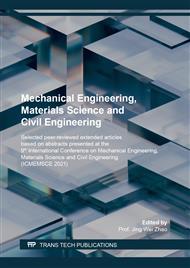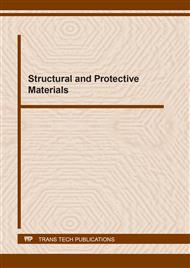[1]
N. Zong, Y. Liu, H. Zhang, X. Yang, Application of Chamfered Slab Technology to Reduce Straight Edge Seam Defects of Non-oriented Silicon Electrical Steel Generated during Flexible Thin Slab Casting Process. Metall. Res. Technol. 114 (2017) 311-320.
DOI: 10.1051/metal/2016073
Google Scholar
[2]
N. Zong, Y. Liu, H. Zhang, Application of chamfered narrow face mold technology to reduce longitudinal surface crack defects of hyperperitectic steel generated during flexible thin slab casting process. Metall. Res. Technol. 114 (2017) 413-421.
DOI: 10.1051/metal/2017030
Google Scholar
[3]
N. Zong, Y. Liu, S. Ma, W. Sun, T. Jing, H. Zhang, A review of chamfer technology in continuous casting process. Metall. Res. Technol. 204 (2020) 204-219.
DOI: 10.1051/metal/2020014
Google Scholar
[4]
N. Zong, T. Jing, Y. Liu, Comparative studies on a chamfer technology and a convex roll technology during the soft reduction process. Archives of Metallurgy and Materials. 66 (2021) 819-829.
Google Scholar
[5]
N. Zong, H. Zhang, Y. Liu, M. Wang, Application of a chamfer slab technology to reduce internal cracks of continuous casting bloom during soft reduction process. Metall. Res. Technol. 116 (2019) 608-619.
DOI: 10.1051/metal/2018112
Google Scholar
[6]
N. Zong, J. Huang, J. Liu, S. Ma, T. Jing, Analysis of internal cracks in high carbon casting bloom induced by soft reduction process and its improvement using numerical simulations and industrial experiment. Metall. Res. Technol. 118 (2021) 102-110.
DOI: 10.1051/metal/2020079
Google Scholar
[7]
N. Zong, H. Zhang, Y. Liu, Z. Lu, Analysis of the off-corner subsurface cracks of continuous casting blooms under the influence of soft reduction and controllable approaches by a chamfer technology. Metall. Res. Technol. 116 (2019) 310-319.
DOI: 10.1051/metal/2018102
Google Scholar
[8]
N. Zong, H. Zhang, Y. Liu, Z. Lu, Analysis on morphology and stress concentration in continuous casting bloom to learn the formation and propagation of internal cracks induced by soft reduction technology. Ironmaking & Steelmaking. 46 (2019) 872-885.
DOI: 10.1080/03019233.2018.1556911
Google Scholar
[9]
X. Zhao, J. Zhang, S. Lei, Y. Wang, The position study of heavy reduction process for improving centerline segregation or porosity with extra-thickness slabs. Steel Res. Int. 85 (2014) 645-658.
DOI: 10.1002/srin.201300192
Google Scholar
[10]
Z. Xu, X. Wang, M. Jiang, Investigation on improvement of center porosity with heavy reduction in continuously cast thick slabs. Steel Res. Int. 88 (2017) 231-242.
DOI: 10.1002/srin.201600061
Google Scholar



